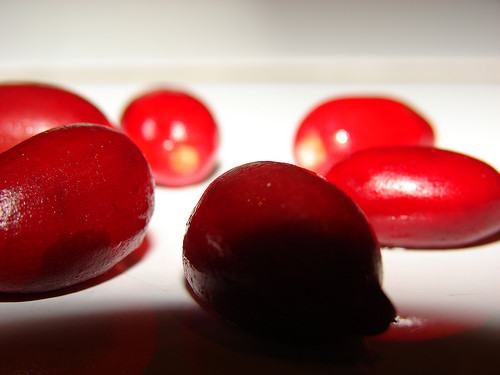Miracle fruits are marvellous game-changers.
- Miracle fruits are berries of a species of shrub-growing plant, that is native to western Africa.
- ‘Miracle fruit’ are also known as ‘sweet berries’, ‘miracle berries’, ‘taamis’, ‘miraculous berries’, and ‘agbayuns’.
- The scientific name of the miracle fruit is Synsepalum dulcificum and it is from the family Sapotaceae, a family of evergreen flowering trees and shrubs.
- Miracle fruits are small and are an ovoid shape, and they are roughly 2 to 3 centimetres (0.8 to 1.2 inches) in length.
- While the miracle fruit does not have much flavour itself, a protein named miraculin found in the fruit’s flesh, causes sour foods to taste sweet when the flesh is consumed.
Miracle Fruit
Image courtesy of Forest and Kimm Starr/Flickr
- The shrubs that bear miracle fruit grow to a height of 1.8 to 4.5 metres (5.9 to 14.8 feet), and the fruit is produced throughout the year.
- The impact of the miracle fruit on one’s sense of taste lasts for around 30 minutes, or occasionally longer, and the fruit is eaten raw, typically immediately before sour tasting food.
- Miracle fruits have a bright red skin colour and they have flesh that is a translucent white colour, which includes one seed.
- To maintain the flavour alterating properties of miracle fruit, berries must be eaten promptly after picking, as their effectiveness decreases the longer they are stored.
- Miracle fruit has been designated as a food additive in its history; and while research has been undertaken to determine the possibility of the fruit being used to change the taste of food to make it sweeter, as yet, it has not been a commercially viable option.






Hey really nice article very informational.